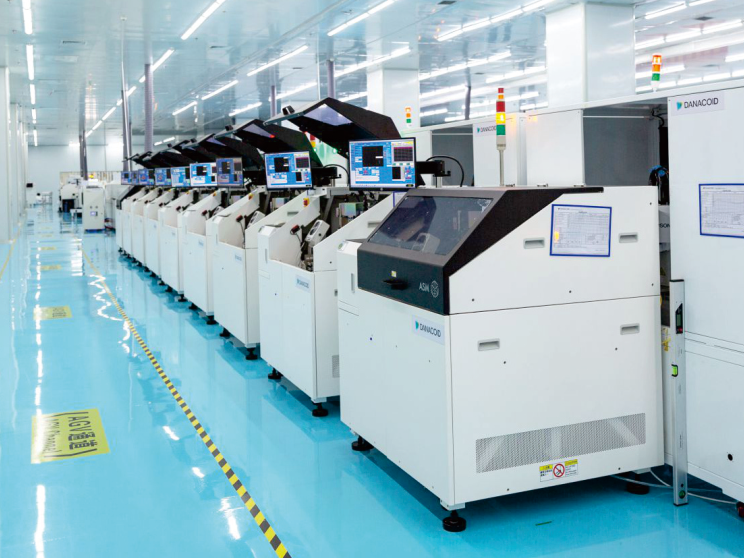Have you ever turned up your favorite song, only to be met with crackling or muffled audio from your speakers? It’s so frustrating, isn’t it? Distortion and low volume can completely ruin your listening experience. These issues are often caused by simple problems like loose connections or incorrect configurations. Let’s troubleshoot your loudspeaker system to get it back to delivering amazing sound.
Diagnosing the Problem
Identifying Symptoms of Distortion
Distortion in your loudspeaker system can be pretty obvious once you know what to listen for. Do you hear crackling, buzzing, or a harsh, unpleasant sound when playing music? That’s distortion. Sometimes, it might sound like the audio is breaking up, especially during louder parts of a song. If vocals or instruments don’t sound clear, your speakers might be struggling with distortion. Pay attention to whether the issue happens at all volume levels or only when you crank it up. This can help you narrow down the cause.
Recognizing Signs of Low Volume
Low volume issues are a bit trickier to spot but just as frustrating. If you find yourself constantly turning the volume knob higher than usual, something’s off. Does the sound seem faint or muffled, even when the volume is maxed out? That’s a clear sign. Compare the output to another speaker or device to confirm. Sometimes, low volume can also make it hard to hear certain frequencies, like bass or treble, which can make your music feel flat or lifeless.
Common Causes of Loudspeaker Issues
So, what’s causing these problems? It could be something as simple as a loose cable or a poorly connected wire. Incorrect audio settings on your device or amplifier might also be to blame. Sometimes, the issue lies in the audio source itself, like a low-quality file or streaming service. Physical damage to the speaker, such as a torn cone or worn-out components, can also lead to distortion or low volume. To troubleshoot loudspeaker system problems effectively, start by checking these common culprits.
Fixing Distortion
Check for Loose or Damaged Connections
Start by examining all the connections in your loudspeaker system. Loose or damaged wires can cause distortion. Look at the cables connecting your speakers to the amplifier or audio source. Are they securely plugged in? Check for frayed or bent wires. If you spot any damage, replace the cable. A quick fix like this can often solve the problem.
Inspect for Air Leaks or Blockages
Air leaks in your speaker enclosure can mess with sound quality. Gently press around the edges of the speaker to check for gaps. If you feel air escaping, seal the leak with adhesive or tape. Also, inspect the speaker grille for dust or debris. Blockages can distort sound. Clean the grille with a soft brush or cloth.
Test for Rubbing Voice Coils
A rubbing voice coil can create a scratchy or buzzing sound. To test this, gently press the speaker cone inward. If you hear a scraping noise, the voice coil might be misaligned. Fixing this requires professional help, so consider reaching out to a technician.
Avoid Overdriving the Amplifier
Pushing your amplifier beyond its limits can cause distortion. Keep the volume at a reasonable level. If you notice distortion at high volumes, your amplifier might not be powerful enough for your speakers. Upgrading to a compatible amplifier can help.
Fixing Low Volume
Verify Volume Levels on All Devices
Start by checking the volume settings on every device in your setup. Is the volume on your phone, computer, or audio source turned up? Sometimes, the issue isn’t with your speakers but with the device sending the audio. Double-check the volume on your amplifier or receiver too. If one device has its volume set too low, it can affect the overall output. Adjust each device to a moderate level and test the sound again.
Check the Audio Source Output
Your audio source might be the culprit. Low-quality audio files or streaming services can produce weak sound. Try playing a high-quality file or switching to a different streaming platform. If you’re using a turntable or CD player, ensure the output settings match your amplifier’s input. A mismatch can lead to low volume. Fixing this is an easy way to improve your listening experience.
Test with a Different Audio Source or Cable
Sometimes, the problem lies in the cable or the audio source itself. Swap out the cable connecting your speaker system to the audio source. Use a different device, like another phone or laptop, to test the sound. If the volume improves, you’ve found the issue. Replacing a faulty cable or using a better audio source can make a big difference.
Optimize Speaker Placement and Avoid Obstructions
Where you place your speakers matters. If they’re tucked behind furniture or too close to walls, the sound can feel muffled. Move them to an open space and angle them toward your listening area. Avoid placing objects in front of the speakers. Even small adjustments can help the sound travel more freely and boost the volume.
Distortion and low volume don’t have to ruin your listening experience. Most issues come from simple problems you can fix yourself. By taking the time to troubleshoot loudspeaker system issues, you’ll restore clear, powerful sound. Regular maintenance and smart usage habits will keep your system in top shape. If nothing works, don’t hesitate to call a professional.









